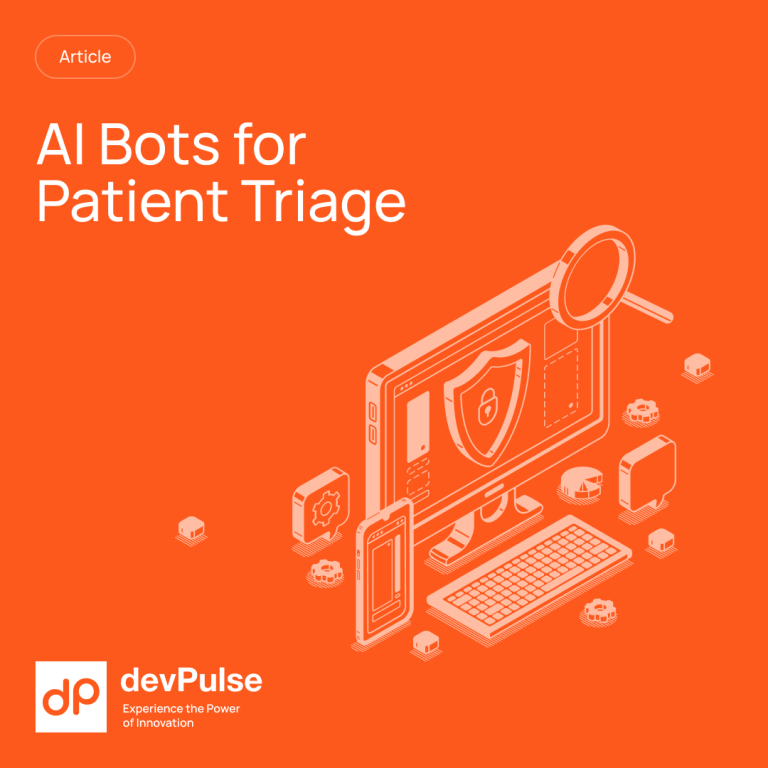As the digital world becomes entrenched and intertwined with “real life,” there is an increased need for custom solutions. You need those to stand out in the market, tap into niches that have yet to be—well—tapped, and so much more.
But you know how it goes. The only product that doesn’t have people trying to steal or compromise is an unsuccessful one. Thus, if you’re betting on your custom web app making it into the big leagues, you have to pay more than some attention to cybersecurity; otherwise, your efforts would be for naught!
In this article, we’ll explore how aligning cybersecurity with business objectives is essential for protecting assets, maintaining customer trust, and achieving long-term success in custom web application development efforts.
Understanding the Business Objectives
To effectively align cybersecurity with your company’s goals, you must identify and prioritize your key business objectives. These objectives will guide your cybersecurity efforts and serve as the foundation for your custom web application development project.
Start by assessing the role of your custom web apps in achieving your business objectives. Are they designed to streamline internal processes, enhance customer engagement, or generate revenue? Clearly defining the purpose of your applications will help you determine the most critical security measures to implement.
Next, establish specific, measurable, achievable success metrics for your custom web app projects. These may include:
- Improving efficiency by reducing manual tasks
- Increasing customer satisfaction and retention rates
- Boosting sales and revenue through enhanced functionality
Remember, the goal is to create a secure and reliable custom web app that supports your business objectives. By taking the time to understand and prioritize these objectives, you can ensure that your cybersecurity efforts are aligned with your company’s overall success.
Assessing Cybersecurity Risks in Custom Web App Development
In custom web application development, cybersecurity risks lurk around every corner. To protect your business and maintain your users’ trust, you must identify and address these risks head-on.
Common vulnerabilities and threats in custom web apps include:
- Injection attacks, such as SQL injection and cross-site scripting (XSS)
- Authentication and authorization flaws, which can lead to unauthorized access
- Insecure data storage, putting sensitive information at risk
- Insufficient logging and monitoring make it challenging to detect and respond to breaches
The potential impact of these cybersecurity breaches on your business objectives cannot be overstated. A single incident can result in:
- Significant financial losses
- Damage to your brand reputation
- Loss of customer trust and loyalty
- Legal and regulatory consequences
Real-world examples demonstrate the severe consequences of neglecting cybersecurity in custom web applications:
- In 2017, Equifax suffered a massive data breach due to an unpatched vulnerability in their custom web app, exposing the personal information of 147 million people and resulting in over $575 million in settlements.
- Yahoo! faced multiple breaches between 2013 and 2016, impacting over 3 billion user accounts, ultimately reducing Verizon’s acquisition price by $350 million.
- British Airways experienced a breach in 2018 due to a vulnerability in its online booking system. The breach affected 380,000 transactions, resulting in a £20 million fine under GDPR.
To mitigate these risks, conducting a thorough risk assessment is crucial. This process involves:
- Identifying and prioritizing assets
- Analyzing potential threats and vulnerabilities
- Evaluating the likelihood and impact of each risk
- Determining appropriate risk management strategies
Integrating Cybersecurity into the Development Process
Integrating cybersecurity into your custom web application development process is essential for creating secure and reliable applications that support your business objectives. Adopting a security-first approach can minimize the risk of costly breaches and protect your company’s reputation.
The first step is to adopt secure coding practices and standards. This includes:
- Implementing input validation and sanitization to prevent injection attacks
- Using parameterized queries to protect against SQL injection
- Encrypting sensitive data both in transit and at rest
- Following the principle of least privilege when granting user permissions
In addition to secure coding, implementing security testing and quality assurance measures is crucial. This involves:
- Conducting regular code reviews to identify and fix vulnerabilities
- Performing penetration testing to simulate real-world attacks and assess your application’s defenses
- Automating security testing as part of your continuous integration and deployment (CI/CD) pipeline
- Engaging third-party security experts to conduct audits and assessments
Finally, ensuring secure deployment and maintenance of your custom web apps is critical. This includes:
- Keeping all software components, including frameworks and libraries, up to date with the latest security patches
- Configuring servers and infrastructure securely, following industry best practices
- Implementing a robust incident response plan to detect and respond to potential breaches quickly
- Regularly monitoring logs and alerts to identify suspicious activities
Aligning Cybersecurity Measures with Business Priorities
To effectively align your cybersecurity measures with your business priorities, you must take a strategic approach that balances security with other critical factors.
Prioritizing Security Efforts
One of the key aspects of aligning cybersecurity with business priorities is to focus on the most critical assets and vulnerabilities that could significantly affect your company’s success. Prioritize your security efforts based on the following:
- The potential impact on your business objectives
- The sensitivity of the data handled by your custom web app
- The likelihood and severity of potential threats
By allocating resources to the most critical areas, you can ensure that your security measures effectively support your business goals.
Balancing Security and Usability
Another crucial consideration is the balance between security and usability. While implementing robust security controls is essential, it should not come at the expense of user experience. To strike the right balance:
- Avoid overly restrictive or cumbersome security measures that may lead users to abandon your application
- Implement security controls that provide robust protection while maintaining ease of use
- Regularly gather user feedback and make adjustments as needed
By finding the right balance between security and usability, you can ensure that your custom web app is secure and user-friendly.
Optimizing Performance
Performance is another critical factor when aligning cybersecurity measures with business priorities. Ensure your security solutions are optimized for performance and not cause unacceptable delays or downtime. To achieve this:
- Regularly monitor and test your application’s performance
- Identify and address any performance issues promptly
- Consider the performance impact when selecting and implementing security solutions
By optimizing performance, you can ensure that your custom web app meets both security and performance requirements and supports your business objectives.
Ensuring Compliance
Compliance with relevant industry regulations and standards is critical to aligning cybersecurity with business priorities. Depending on your industry, you may need to adhere to specific security requirements such as:
- HIPAA for healthcare applications
- PCI DSS for applications handling payment card information
- GDPR for applications processing personal data of EU citizens
To ensure compliance:
- Understand the relevant regulations and standards that apply to your business
- Incorporate the necessary compliance requirements into your cybersecurity strategy
- Regularly assess and audit your custom web app to maintain compliance
Failing to comply with these regulations can result in significant fines, legal liabilities, and reputational damage. Prioritizing compliance helps protect your business from these risks.
Fostering a Cybersecurity Culture
Creating a cybersecurity culture within your organization is essential for ensuring the long-term success of your custom web application development efforts. A cybersecurity culture prioritizes security awareness, encourages collaboration, and promotes continuous improvement.
To foster a cybersecurity culture, start by educating stakeholders on the importance of cybersecurity. This includes:
- Providing regular training sessions for employees, covering topics such as secure coding practices, data handling, and incident response
- Conducting awareness campaigns to reinforce the significance of cybersecurity in protecting business objectives
- Encouraging open discussions about security concerns and best practices
Educating stakeholders can create a shared understanding of cybersecurity’s role in your organization’s success.
Collaboration between development and security teams is another aspect of a strong cybersecurity culture. Encourage these teams to work closely together by:
- Involving security experts early in the development process to identify and address potential vulnerabilities
- Establishing regular communication channels between development and security teams
- Promoting a shared responsibility for security rather than treating it as a separate concern
By fostering collaboration, you can ensure that security is integrated seamlessly into your custom web application development process.
Finally, establishing clear communication channels and protocols is crucial for maintaining a cybersecurity culture. This includes:
- Defining roles and responsibilities for cybersecurity incidents
- Creating well-documented incident response plans
- Ensuring that all stakeholders know how to report security concerns and incidents
- Regularly updating and testing communication protocols to ensure their effectiveness
Measuring the Success of Cybersecurity Alignment
Measuring the success of your efforts to align cybersecurity with your business objectives is crucial for ensuring the effectiveness of your strategy and making data-driven decisions. By defining key performance indicators (KPIs), monitoring security metrics, and regularly reviewing your approach, you can continually improve your cybersecurity posture.
To start, define a set of KPIs that reflect the success of your cybersecurity alignment efforts. These may include:
- The number of identified and remediated vulnerabilities in your custom web applications
- The average time to detect and respond to security incidents
- The percentage of employees who have completed cybersecurity training
- The compliance rate with relevant industry regulations and standards
Monitoring and analyzing security metrics is another essential aspect of measuring success. Regularly collect data on:
- Attempted and successful cyber attacks
- System and network performance
- User behavior and access patterns
- Security tool effectiveness
Finally, regularly review and update your cybersecurity alignment approach to ensure its ongoing effectiveness. This involves:
- Conducting periodic assessments of your cybersecurity posture
- Evaluating the performance of your security controls and processes
- Gathering feedback from stakeholders on the impact of cybersecurity measures
- Adjusting your strategy based on new threats, technologies, and business requirements
Measuring the success of your cybersecurity alignment is not a one-time event but an ongoing process. By defining KPIs, monitoring metrics, and regularly reviewing your strategy, you can demonstrate the value of your cybersecurity efforts, make data-driven decisions, and continually improve your organization’s security posture. This, in turn, supports the long-term success and resilience of your custom web application development initiatives.
Conclusion
Taking a strategic, proactive approach to cybersecurity can protect your organization’s assets, reputation, and customer trust while supporting your overall business goals.
So, let’s quickly recap what we’ve talked about today. The key factors of aligning cybersecurity with your business needs are:
- Understanding and prioritizing your business objectives
- Assessing and mitigating cybersecurity risks
- Integrating security into the development process
- Balancing security with other priorities like usability and performance
- Fostering a culture of cybersecurity awareness and collaboration
- Measuring the success of your alignment efforts through KPIs and ongoing review
Following these steps can help you create a strong foundation for secure, resilient custom web applications that will drive your business forward.
As new threats emerge and your business evolves, your cybersecurity strategy must adapt to remain effective. To support this ongoing process, consider the following recommendations:
- Prioritize cybersecurity at the executive level, ensuring that it receives the necessary resources and attention
- Foster open communication and collaboration between development, security, and business teams
- Invest in ongoing training and education for all stakeholders to maintain a strong cybersecurity culture
- Partner with experienced cybersecurity professionals who can provide guidance and support tailored to your unique business needs
- Stay proactive in your approach, anticipating and mitigating risks before they can impact your business
The key is to view cybersecurity not as a burden but as an essential enabler of your business objectives—one that supports innovation, growth, and resilience.



